Best Packaging Options for Hydroponic Produce: A Comprehensive Guide
Hydroponic farming has transformed how we grow fresh, high-quality produce, but delivering it to customers in peak condition requires thoughtful packaging. Whether you’re selling leafy greens, herbs, or specialty vegetables, the right packaging is essential for protecting delicate crops, maintaining freshness, and showcasing your brand. This guide explores the most effective packaging options for hydroponic produce and how to choose the best solution for your farm.
Why Packaging is Essential for Hydroponic Produce
Hydroponic crops are grown in carefully controlled environments, which makes them uniquely fresh and delicate. Proper packaging ensures that this quality is preserved through transport and delivery. Here’s why choosing the right packaging is critical:
Freshness Matters: Hydroponic produce is often harvested at peak ripeness. Packaging must prevent wilting and moisture loss while maintaining visual appeal.
Delicate Crops Need Protection: Crops like leafy greens and herbs are more fragile and require sturdy, supportive packaging.
Eco-Conscious Consumers: Hydroponic farming is often associated with sustainability. Using eco-friendly packaging can reinforce your brand’s commitment to the environment.

Common Types of Packaging for Hydroponic Produce
Here are some of the most popular packaging options for hydroponic crops, along with their advantages and best use cases:
1. Clamshell Packaging
What It Is: Transparent, rigid plastic containers with a hinged lid.
Benefits:
Provides visibility, allowing customers to see the freshness of your produce.
Protects delicate crops like hydroponic lettuce and herbs from damage.
Stackable for easy transport and storage.
Best For: Microgreens, salad greens, herbs, and other delicate hydroponic crops.
Considerations: Choose recyclable or biodegradable clamshells to align with sustainable practices.
2. Plastic Bags
What It Is: Lightweight, resealable bags often made from polyethylene or compostable materials.
Benefits:
Affordable and versatile.
Helps retain moisture, extending shelf life for hydroponic leafy greens.
Ideal for local markets and direct sales.
Best For: Hydroponic spinach, kale, arugula, and other greens.
Considerations: Ensure proper ventilation to avoid condensation, which can damage crops.
3. Trays with Film Sealing
What It Is: Rigid trays covered with a clear, sealed film.
Benefits:
Offers sturdy protection for fragile hydroponic produce.
Extends freshness by sealing in moisture and preventing contamination.
Creates a polished, retail-ready appearance.
Best For: Cherry tomatoes, cucumbers, peppers, or mixed hydroponic greens.
Considerations: Explore sustainable materials to reduce environmental impact.
4. Net Bags
What It Is: Breathable mesh bags designed for bulk packaging.
Benefits:
Lightweight and cost-effective.
Allows airflow, preventing moisture buildup.
Convenient for wholesale and bulk sales.
Best For: Hydroponic root vegetables like radishes and bulk herbs.
Considerations: Not suitable for delicate or highly perishable crops.
5. Paperboard Cartons or Boxes
What It Is: Rigid boxes made from cardboard or kraft paper.
Benefits:
Eco-friendly and fully recyclable.
Protects larger or heavier hydroponic crops during shipping.
Excellent for branding with printed designs or labels.
Best For: Hydroponic lettuce heads, zucchini, and tomatoes.
Considerations: Use moisture-resistant liners for crops with higher water content.
6. Glass Jars or Bottles
What It Is: Premium, reusable containers for value-added hydroponic products.
Benefits:
Airtight seals preserve freshness and prevent spoilage.
Ideal for specialty or processed items.
Reinforces a high-end, sustainable brand image.
Best For: Packaged hydroponic herbs, infused oils, or pickled vegetables.
Considerations: Heavier and more expensive than other options, so best for small-scale or premium offerings.

Tips for Choosing the Right Packaging for Hydroponic Produce
When deciding on packaging, consider these factors:
Crop Type: Delicate crops like microgreens need protective packaging, while hardy crops like root vegetables can use simpler options.
Customer Preferences: Retail customers often prioritize aesthetics, while wholesale buyers focus on cost-efficiency.
Transportation Needs: Long-distance shipping requires durable, tamper-resistant options.
Sustainability Goals: Many hydroponic farmers align with eco-friendly practices. Choose compostable or recyclable materials when possible.

Showcase Your Hydroponic Produce with the Right Packaging
The right packaging not only protects your hydroponic produce but also tells your story. Adding custom labels with your farm’s logo, crop details, or sustainability initiatives can create a strong connection with your customers — read more about this, here! Contact our team to learn more about launching your Freight Farming business.
Wondering how much it costs to ship a container farm? Learn what factors influence delivery and crane pricing - and how to avoid unexpected charges.
Grants can help fund your Freight Farm! Learn where to find grants, how to write a winning application, and what to expect in the process.
Grants provide a path to funding a Freight Farm for schools and community programs, offering fresh produce, hands-on education, and sustainability benefits. Explore funding options and how to apply today!
Grants can help fund your Freight Farm and make your vision a reality. This guide covers how to find the best funding opportunities, build a compelling application, and stay grant-ready year-round. Explore our expert tips and resources today!
Discover how the Greenery™ by Freight Farms is revolutionizing vertical farming. Learn how this innovative solution maximizes space, conserves resources, and enables sustainable, year-round crop production.
Discover how Controlled Environment Agriculture (CEA) is transforming farming with year-round crop production, optimized growing conditions, and sustainable practices. Learn how Freight Farms' innovative solutions make CEA accessible for growers everywhere.
Discover the best packaging options for hydroponic produce. From clamshells to eco-friendly boxes, find solutions to keep your crops fresh, protected, and market-ready.
Discover how following food safety protocols in vertical farming can boost customer trust, protect your produce, and help your business thrive. Learn key practices that make your Freight Farm a reliable source of fresh, safe, and market-ready crops.
Hydroponic farming is a revolutionary way to grow plants without soil, using nutrient-rich water systems for faster growth and higher yields. Discover the key benefits, popular hydroponic systems, and real-world applications from nonprofits to healthcare, zoos, and more, all driving sustainable food solutions. Learn how you can get started with Freight Farms' customizable hydroponic solutions today."
Discover how to maximize your Freight Farm’s success by connecting with local resources, building community partnerships, recruiting top talent, and securing funding. Learn actionable steps to expand your farm's impact today!
Learn expert strategies to market your Freight Farm, build a strong online presence, engage with your community, and grow your business with sustainable local produce
Discover 16 compelling reasons to start container farming today! From becoming your own boss and contributing to your community, to growing fresh, local produce year-round, container farming offers personal, financial, and environmental benefits.
Learn about 6 important things to consider when packaging your crops. We've compiled some resources to help you determine how to package hydroponic crops and what kind of packaging best suits the needs of you and your customers. We cover value propositions, branding, vegetable preservation, customer segments, and more.
Freight Farms provides a straightforward, sustainable solution for growing produce. This guide offers a comprehensive look at the daily, weekly, and monthly tasks required to maintain a Freight Farm, with detailed steps to give prospective buyers a clear understanding of farm management.
Co2 plays a crucial role in plant growth by aiding photosynthesis, turning carbon dioxide into energy. By supplementing Co2, plants grow larger, retain more moisture, and become more efficient with water use. Learn when to use Co2 and how it can enhance your farm’s output.
As vertical farming grows, so do the possibilities for crops you can cultivate in your farm. From leafy greens to herbs and even experimental crops, Freight Farms offers a vast range of options. However, with so many choices, it’s essential to start with a solid crop plan.
Discover essential cleaning tips for your Freight Farm to boost plant health and maximize efficiency. Learn how daily maintenance routines can prevent pests, bacteria, and algae, keeping your vertical farm productive and thriving.
Small business farmers constantly seek innovative methods to maximize productivity, sustainability, and profitability. This article explores their unique needs, compares traditional farming with container farming, and provides an in-depth evaluation of how Freight Farms can meet them.
Your grocer only sells a tiny fraction of the thousands of varieties of edible greens that exist in nature. At Freight Farms, we’re able to grow delicious and unique plants that you likely haven’t seen at the store.
Ongoing changes to our world, such as increasingly extreme weather and population growth have led many people, particularly in urban communities, to take a long, hard look at food production and distribution.
What happens after you purchase a Freight Farm? We've got you covered! This guide will walk you through the key steps from purchase to launch, ensuring a smooth and successful start to your farming operation.
The Greenery, our climate-controlled, indoor, hydroponic growing system, requires no previous farming experience to operate. However, those already managing successful farms can reap extra benefits.
By examining direct-to-consumer sales, retail and wholesale opportunities, specialty and niche markets, educational and community engagement, urban farming, and value-added products, we provide a comprehensive guide to help small business farmers integrate Freight Farms into their operations effectively.
To determine the best pricing structure, you must research your market. In this guide, we'll help you identify the ideal sales channel, outline the process to establish your pricing, and offer recommendations for moving forward.
In this article, we explore the economic benefits of urban farming, including job creation, community development, enhancing local food systems, and many more.
If you’re interested in bringing a Greenery™ to your community, you must familiarize yourself with local zoning regulations. In this article, we cover the zoning basics and our 7 tips for successfully navigating zoning laws to implement your container farm.
In this guide, we break down the four steps to completing a crop cycle in our hydroponic container farm and the labor requirements you can expect.
Hamilton Horne is the highly successful entrepreneur behind King Tide Farms, a Freight Farming business in Charleston, SC. He sells produce to the city’s high-end restaurants, whose chefs love the microgreens, flavorful leafy greens, and herbs that he grows. Building relationships with chefs can be intimidating, so Hamilton is giving us his tips for how to sell produce to restaurants.
Farmhand, Freight Farms' farm automation software, makes farming manageable. This critical tool is one that every Freight Farmer should take advantage of. It allows you to remotely monitor and control your farm, plan farm tasks, coordinate farm operators, collect key farm and harvest data, and analyze data to understand and optimize farm operations. Around the clock, it's a farmer's best friend!

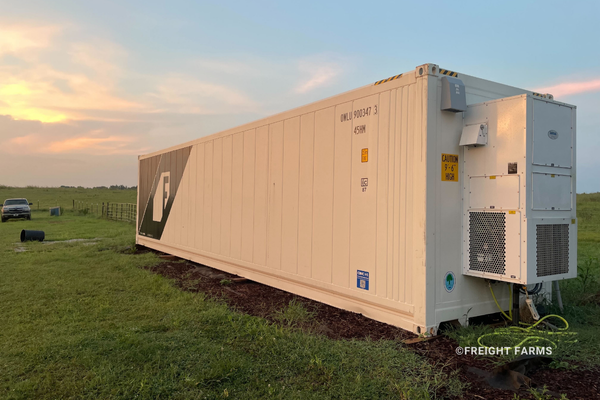









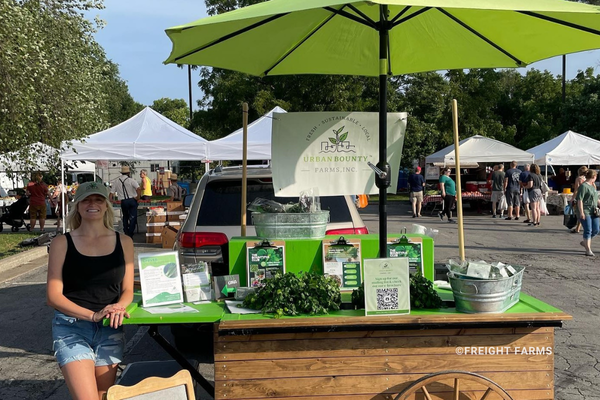





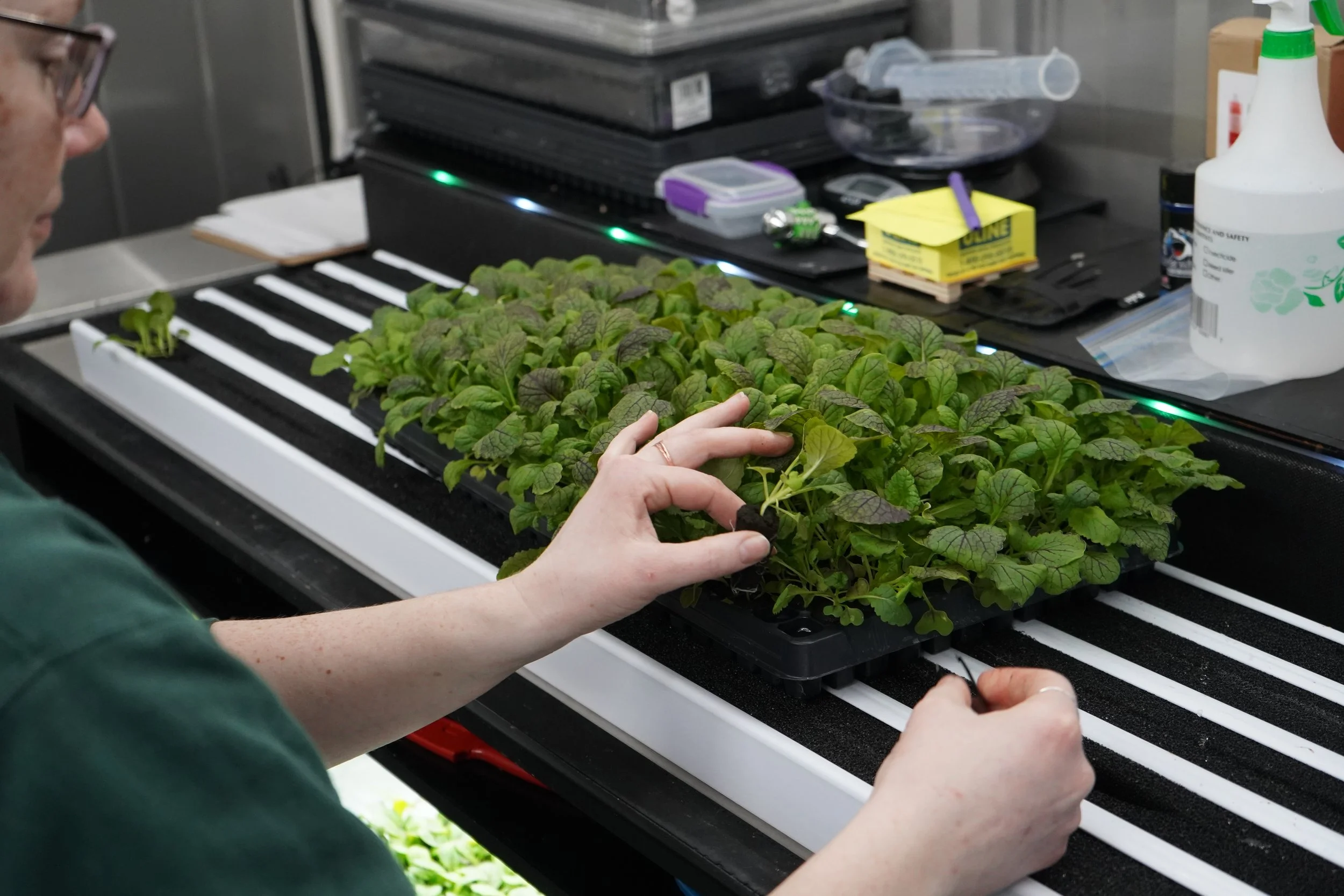


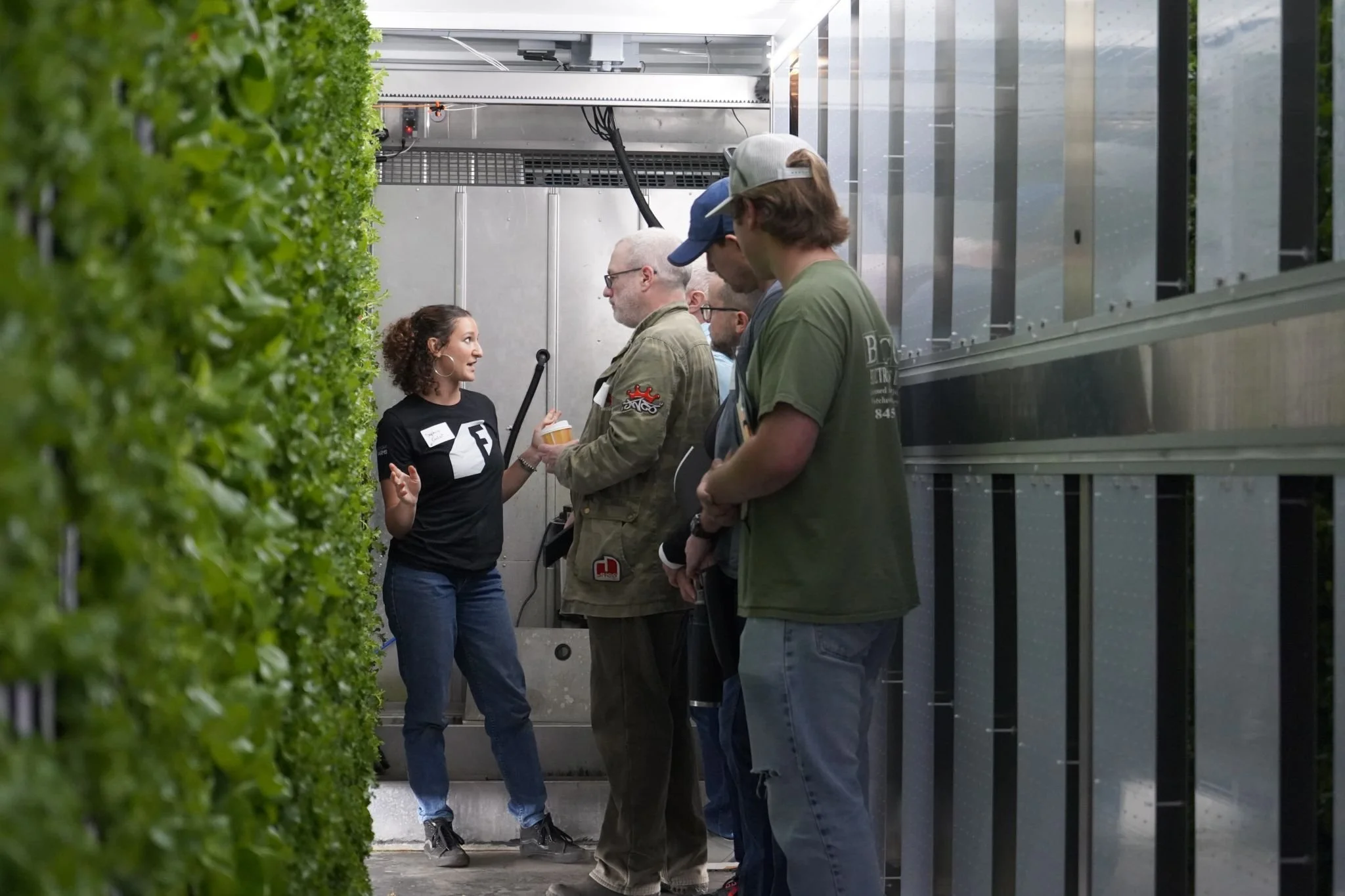







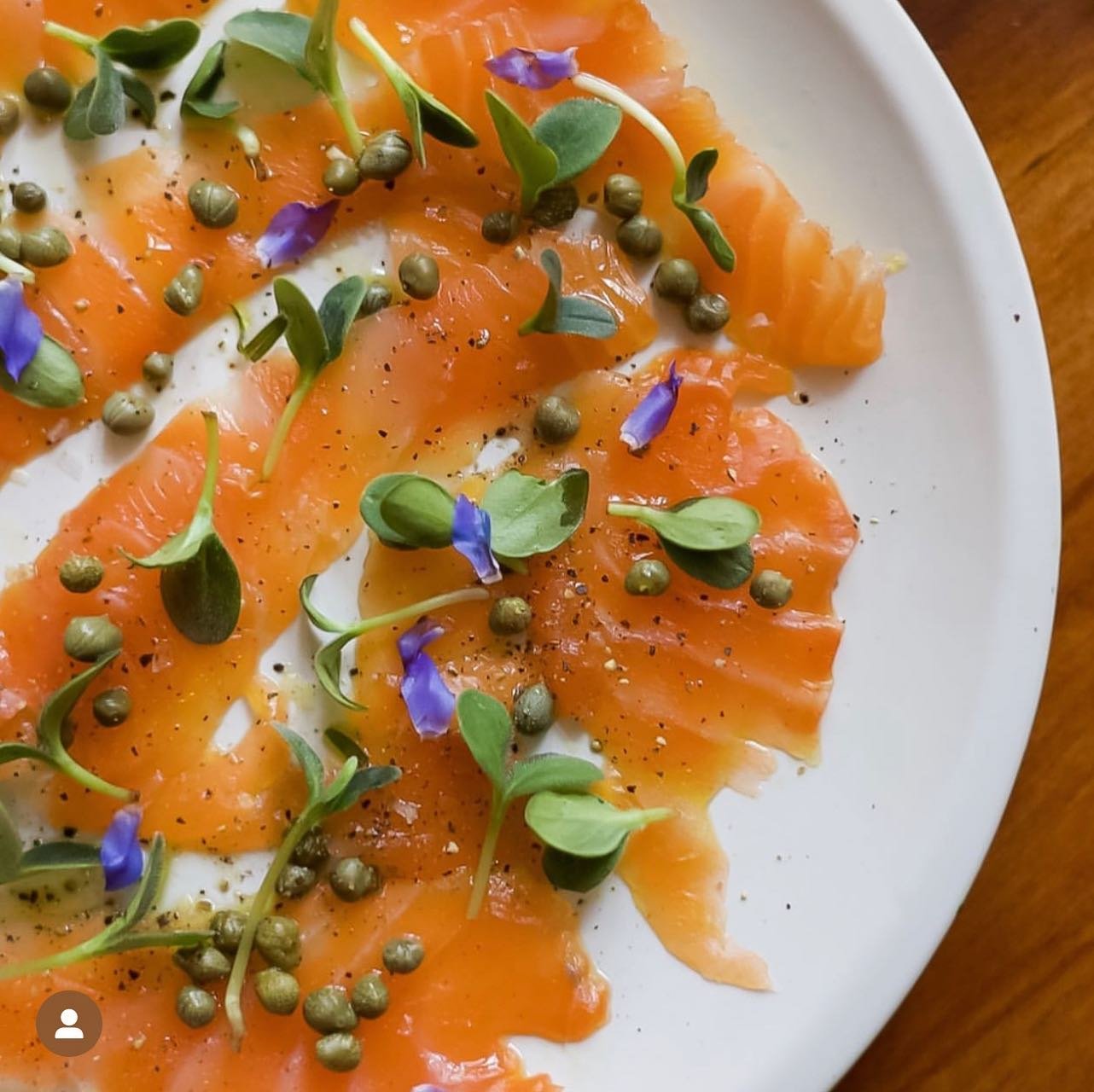
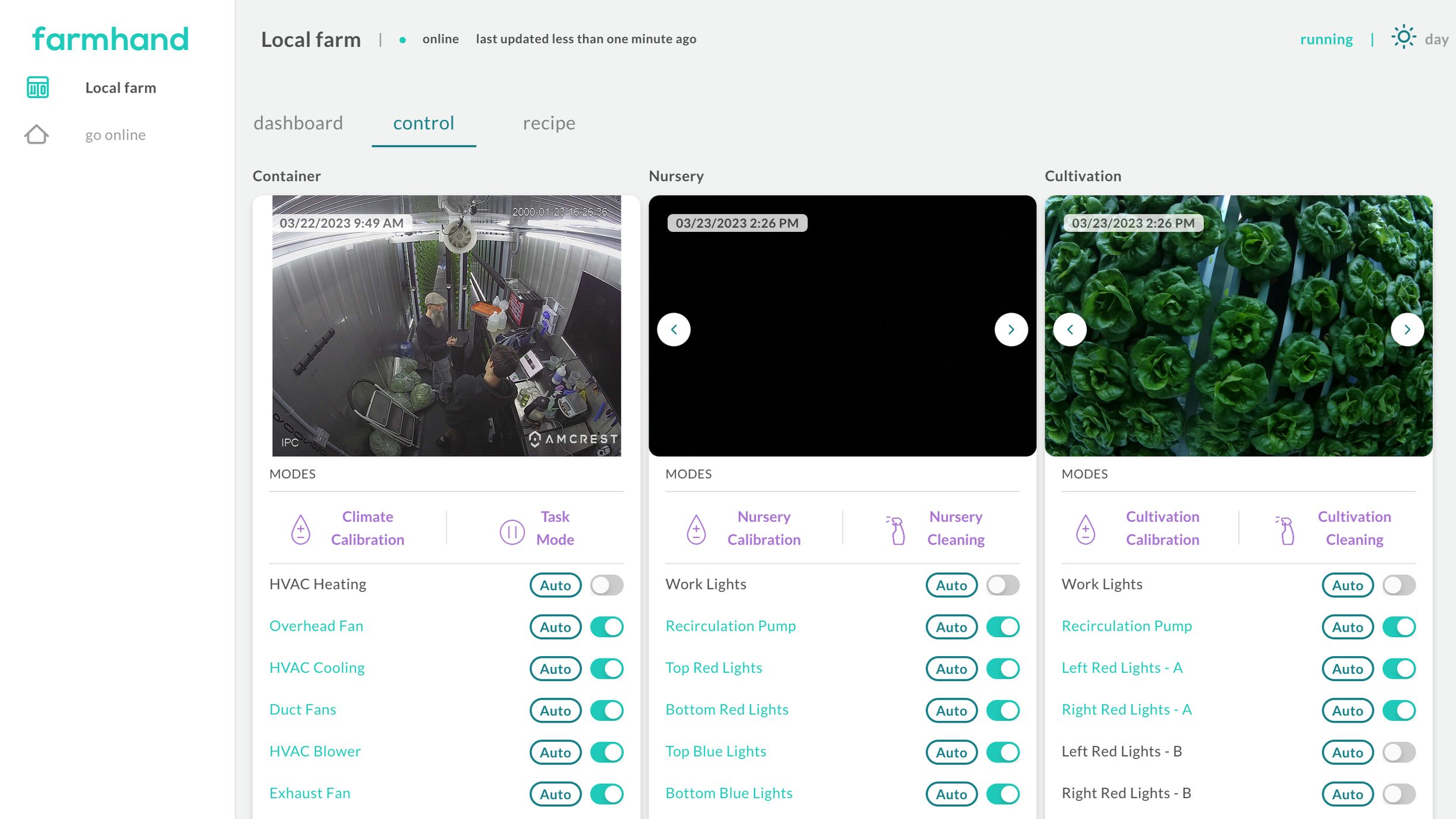
Future planning for your Freight Farms delivery? Learn what your site needs, what to expect on delivery day, and how to avoid common surprises.